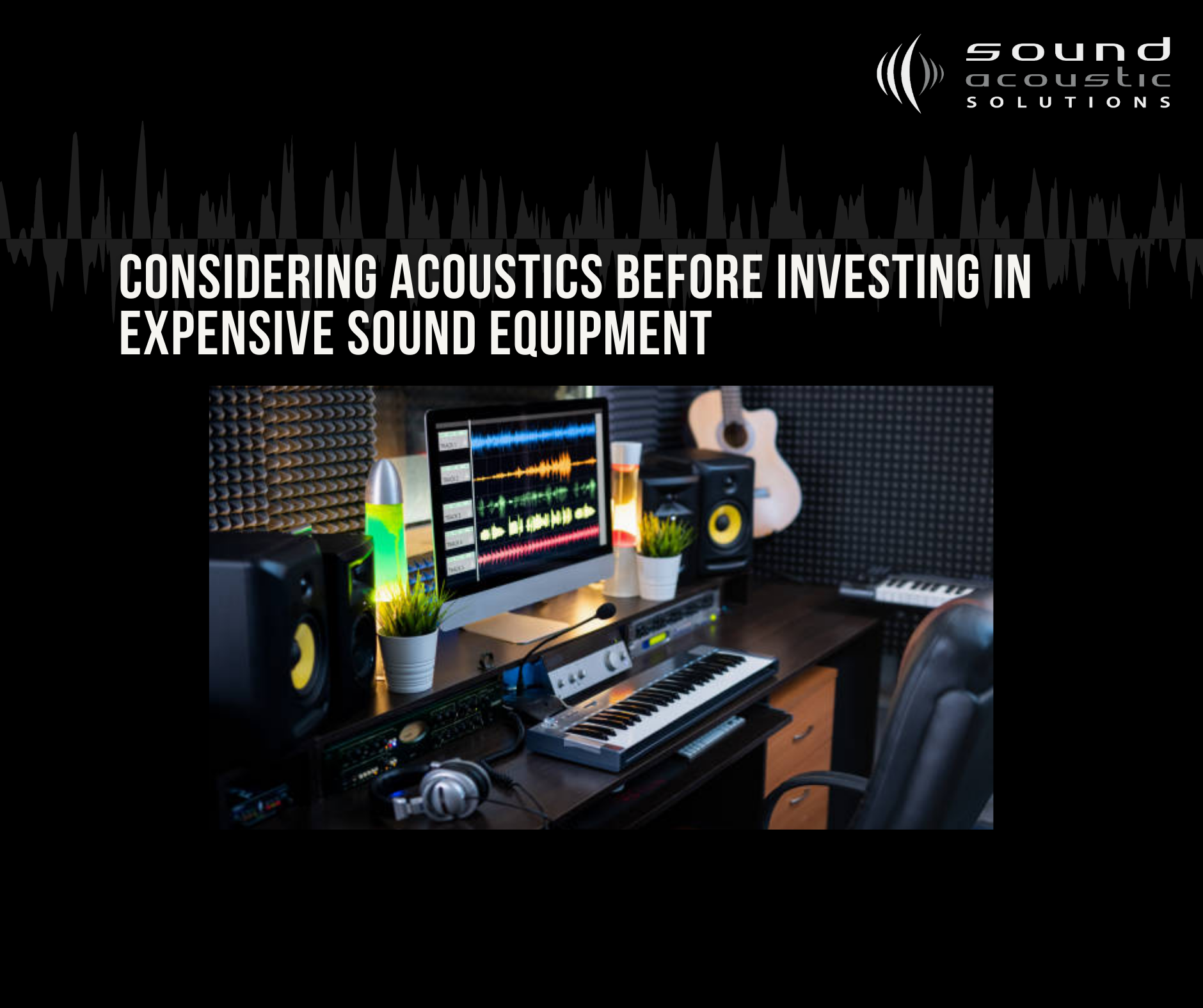When designing and building a recording studio, concert venue, house of worship, home-theater, etc. – it is very common for people to allocate funds for expensive and lavish sound systems before considering the importance of acoustics. While it is true that top of the line sound equipment can outperform many entry-level electronics, the equipment will only sound as good as the room’s acoustic qualities. You can invest in the most extravagant, costly sound system that has the best reviews – but if the room you intend to use it in lacks the proper sound absorption and treatment, reflections and reverberations will deteriorate the overall sound quality of the listening environment.
The following acoustic criteria should always be considered before investing in a sound system, hi-fi listening equipment, or professional audio equipment:
- Reverberation time
- Room shape
- Ambient noise levels
- Areas of flanking
Reverberation Time
When it comes to acoustics, the goal is to absorb unwanted reflections and reverberations, and diffuse or spread the sound evenly from the source – so that the reverberation time is the same at any listening position. Reverberation time (RT) is the time required for a sound, in a room or closed environment, to decay over a specific dynamic range. More specifically, it is measured and assessed by the time it takes for the sound to decay by 60dB. Using a sound-level meter is a good way to measure RT within a given space. This will give you a good idea as to how much absorption will be needed for your room, and how you can start to manipulate the way sound waves will travel.
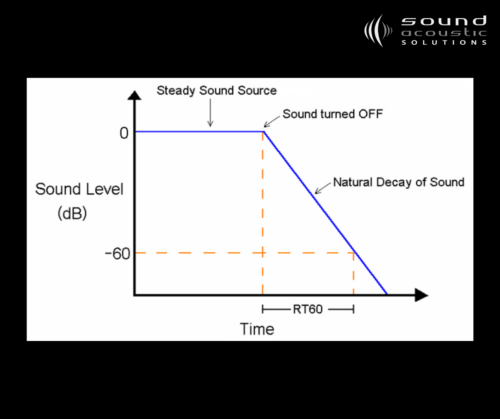
Room Shape
When considering the acoustic absorption needed for a listening environment, the room shape also plays a major role in the overall acoustic quality. The shape of a room will define the movements of sound waves, and ultimately dictate the quality of sound – if not considered, or treated properly. Concave room shapes can lead to “hot spots”, or sound reflections converging at a focal point in the geometric center of the curvature. More absorption is needed in areas where the room shape is of concern, and often times – acousticians will adjust the geometry of curved rooms or surfaces to minimize reverberation issues.
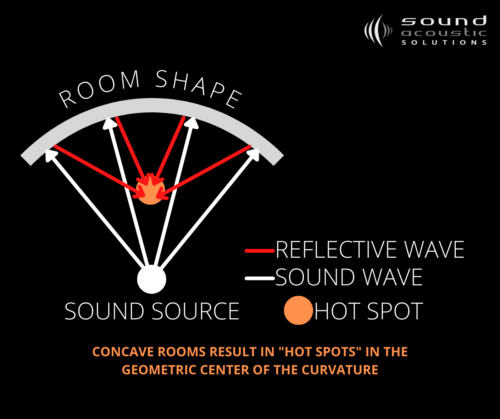
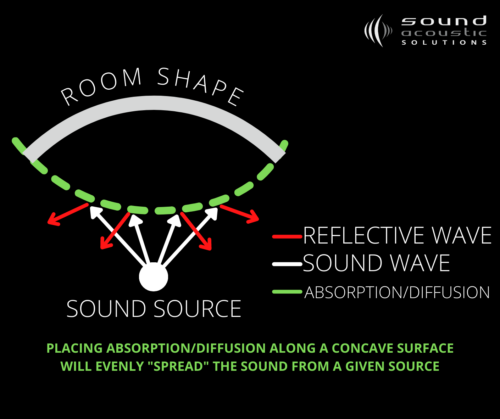
Furthermore, square rooms with parallel walls will also require the same consideration. This type of room, untreated, will result in flutter echoes and reverberations bouncing off of parallel surfaces. It is very important to address early reflections, and place absorption panels and diffusers along these surfaces where they are necessary.
Ambient Noise Levels
The ambient noise level in a room, also referred to as “background noise”, refers to all noise present in a given environment – unwanted sounds not produced by the sound source. For example, the noise level of an HVAC unit or other residential/commercial appliances can affect the ambient noise level of a room. Ambient noise levels can be measured to provide a reference point for analyzing an intrusive sound in any environment, and give insight on necessary steps for proper acoustic treatment. Ambient noise levels are so important to be mindful of, that there are different regulations and safety standards put in to place to protect the hearing and safety of people who work, visit or listen in these different locations.
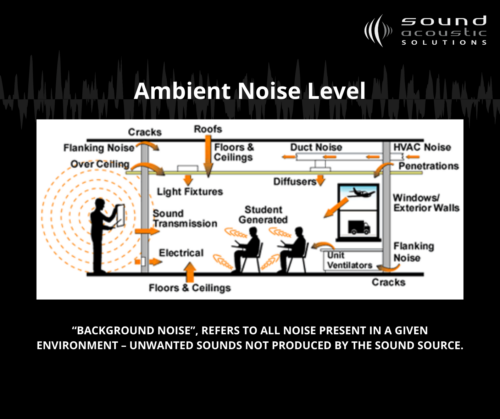
Flanking
Flanking is when sound is transmitted through a partition that separates two rooms – the noisy neighbor upstairs in an apartment complex, the loud co-worker that you can hear through your office walls, a roommate’s loud music that you can hear in the room next door, etc. What each of these scenarios has in common is sound passing through some sort of separating element. A lot of times, good acoustic insulation and sound barriers that stop sound, are a good remedy for flanking transmission. Whatever the case may be, it is important to understand the path that sound is traveling, so that your room can be completely isolated from these unwanted sounds.
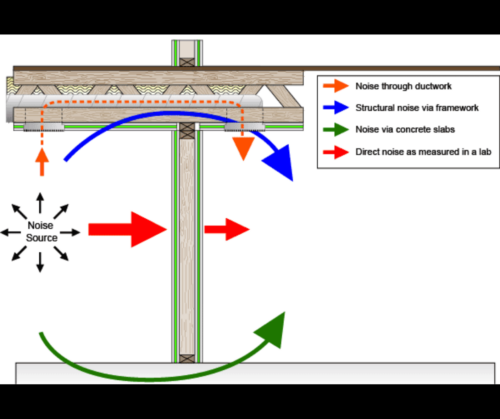
Conclusion
With all of these factors being considered, the best way for someone to get the most out of their sound system, through acoustic consideration is:
- Address unwanted reflections and reverberations that can “muddy” up a listening environment, and add the right treatment (absorption or diffusion) to the room’s surfaces.
- Take the necessary steps to treat concerns about room shape and size – avoid rooms with concave corners or rounded ceilings.
- Use a sound-level meter to read the ambient noise level in your room, and use sound treatment accordingly.
- Take the necessary steps to eliminate flanking through the use of sound barriers or “blockers”, so that the listening environment is isolated from external noises or sound transmission.
Once all of these elements are considered and treated properly, the end-user can really get the most out of their sound system and listening environment. There will be a limit on unwanted noise, and the sound level will be intelligible and clear at any listening position in the room. Acoustics consideration and treatment is really what drives the overall quality of sound within a room. You can have the biggest and best sound system in the world, but it is nothing without proper acoustic treatment.
Browse our various acoustics products here: https://www.soundacousticsolutions.com/shop/
More terms and definitions on acoustics HERE
Subscribe to our YouTube channel HERE
SOURCES:
Science Direct – Reverberation Time Overview
Acoustical Surfaces – Flanking Sound Transmission
GeoNoise – Acoustic Design According to Room Shape
